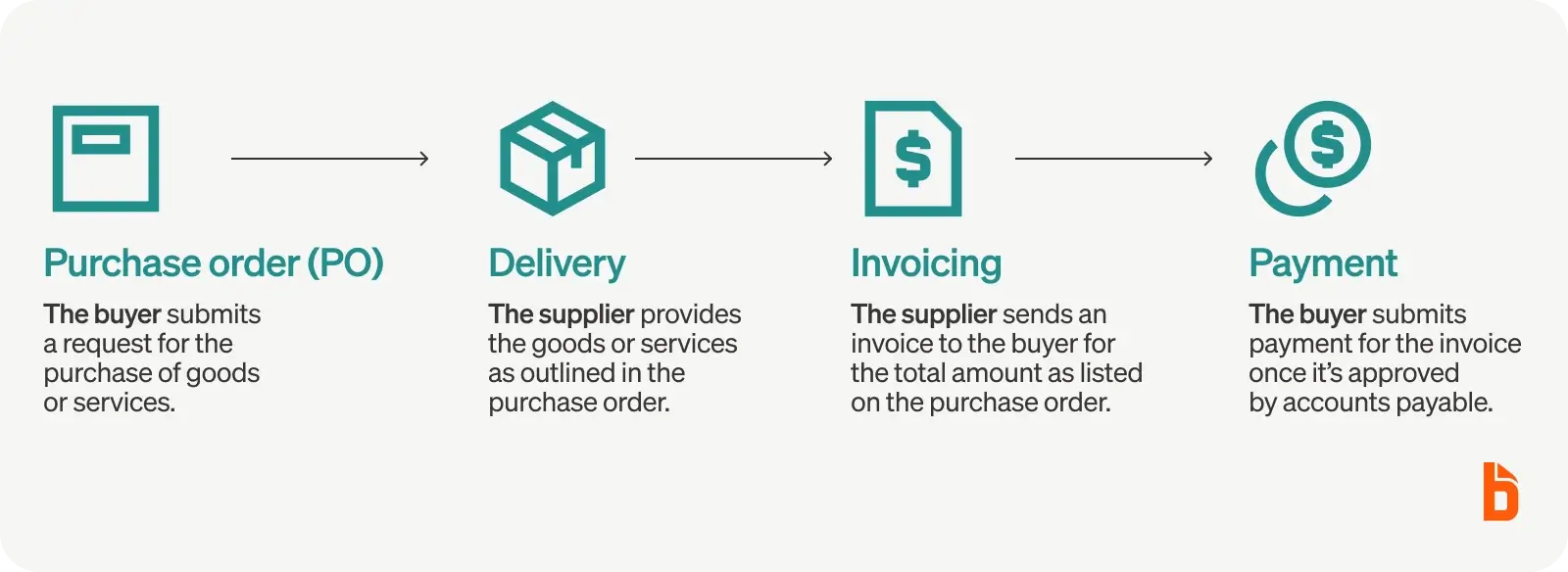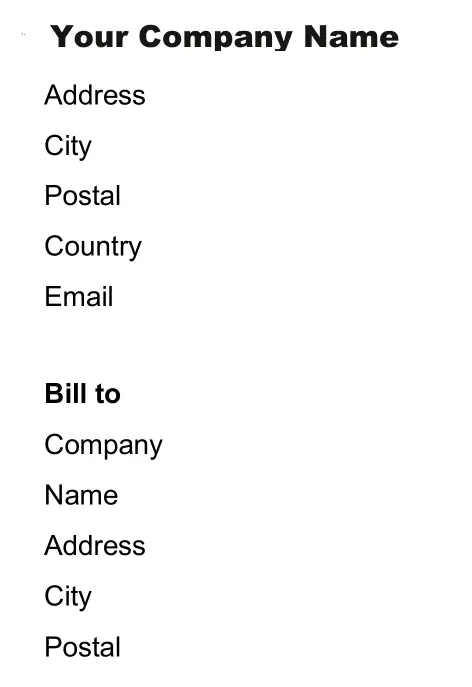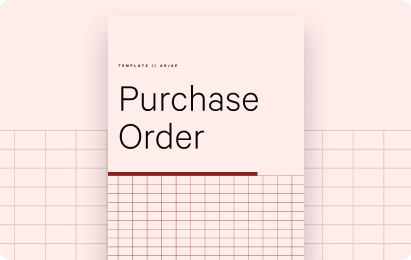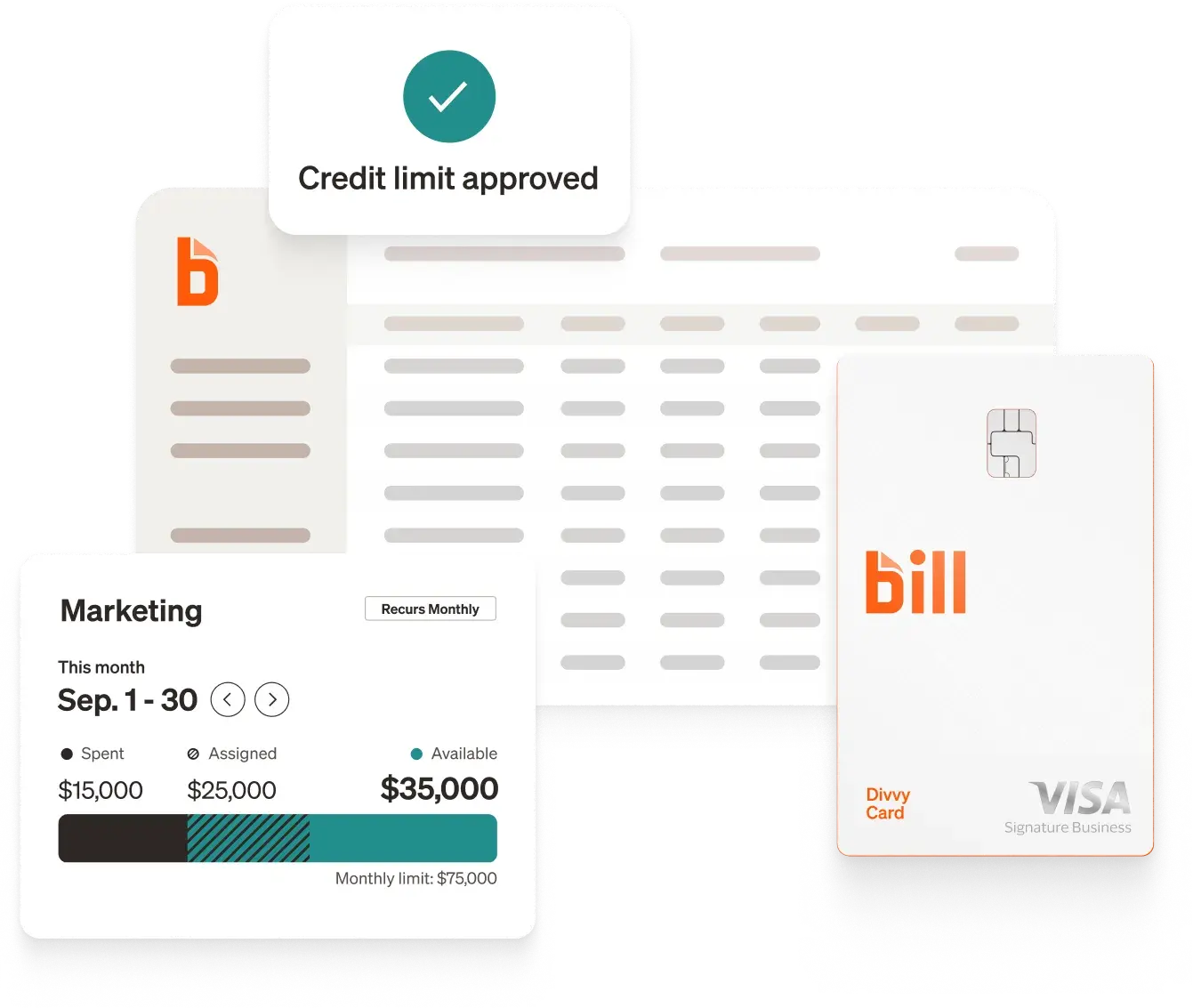Downloadable and printable purchase order templates
Business happens fast. Using a purchase order template can help you keep up. Download one of the templates below, which are available as Word, PDF, or Excel purchase order templates. You can even customize your template to reflect your brand.
What is a purchase order?
When you need to purchase goods or services from a vendor, you’ll want to create a purchase order (PO). A PO serves as a list of all the products or services you need, the quantity of each, and a place to note details about shipping and delivery.

What is the purpose of a purchase order form?
Business is all about communication. A purchase order form clearly communicates what you need as a buyer. The purchase order will also contain details about payment terms and delivery details. Once the seller accepts the purchase order, it becomes a legally binding contract.
Why is a purchase order important to a business?
Businesses use purchase orders to standardize the procurement process. They help to keep track of the company’s money, inventory, and other resources.
Additionally, a PO forms an official record of transactions made by the company, which can be important if the company faces a contract dispute.
What are the different types of purchase orders?
Generally speaking, there are four main types of purchase orders:
- Standard purchase orders: Used for one-time purchases of specific goods or services. The one purchase order will be billed on a single invoice.
- Blanket purchase orders: Created for recurring purchases from the same vendor over an extended period. Each delivery of goods or services would have its own invoice, stemming from the same blanket purchase order.
- Standing purchase orders: Used for regular purchases that don’t have cemented delivery dates. For example, a business may have a standing purchase order for office supplies that they can trigger when needed.
- Planned purchase orders: When businesses don’t have the exact details for a purchase order, they submit a planned purchase order. Planned purchase orders don’t commit the business or supplier to exact amounts or delivery dates.
Key benefits of using a purchase order template
Save time on document creation
Using a purchase order (PO) template helps save time on every document created. Instead of starting from scratch, you simply need to enter the values in the necessary fields.
Save a customized template for each of your suppliers or recurring purchases and you’ll maximize your time savings.
Professional appearance
Consistent, well-formated purchase orders show professionalism, showing your suppliers you’re reliable and well-established. Plus the consistency helps them process POs quickly, delivering what’s requested.
Reduce errors
Our purchase order template reduces your inputs to just a few straightforward fields and formulas. That means no information is getting missed or miscalculations causing disruptions.
Better organization
Having a standardized format makes it easier to manage and compare purchase orders in your systems. You can quickly find the information you need when referring back to past purchase orders, whether you’re analyzing your past needs or creating a similar purchase order.
How to make a purchase order
Step 1: Identify your needs
Determine the vendor you are requesting a purchase from in addition to the quantity needed for the goods or services being requested. Be as specific as possible with what the delivered goods or services entail.
Step 2: Get internal approval
Depending on the business’s purchasing procedures, you may need to get approval for the final billed amount based on the authorized purchase limits or budget. This may include a department head, procurement team, or finance team.
Step 3: Enter your business information
Fill out your business information, including your business name, contact information, and address. The address should match the shipping information for anything being delivered. If the address for delivery is unrelated to your business, be sure to include it in the notes section.
Step 4: Enter the supplier’s business information
Fill out the same information (business name and address) for the supplier, as well as the name of someone who is the point of contact.
Step 5: Add the purchase order information
Each purchase order should have it’s own purchase order number. The purchase order number should be sequential based on the past purchase orders for ease of recordkeeping.
For accounting purposes, you can match the PO number to the invoice number once the transaction is complete
Step 6: Input the goods or services on individual lines
Break out each good or service requested into its own line item with an explicit description of what’s being requested to avoid ambiguity. Add in the quantity, pricing rate, and total amount for each line.
Step 7: Calculate the subtotal, taxes, shipping, and final amount
Add up the amount of each line item into a subtotal for the entire purchase order. Include the tax rate to calculate the tax amount on the order.
With the subtotal, tax amount, and shipping cost, you can sum the values to the total value of the purchase order.
Step 8: Add any extra notes
The notes section is where you can include any important details about the purchase order such as delivery specifics, acceptable alternatives for undeliverable goods or services, additional contact information, or a personalized thank you note.
Step 9: Submit the purchase order to the supplier
Send the purchase order through to the supplier in your usual communication channels. This may be a digital copy sent via email, a physical copy sent by mail, or even delivered by hand if you have regular in-person meetings.
Step 10: Add a copy of the purchase order to your records
Once the purchase order is submitted, you need to ensure it’s in your records for reference and for accounting purposes. Keep a copy in a safe and accessible place, and enter it into your accounting system so the accounts payable process can begin.
How to write a purchase order
Writing a PO is a snap when you use a standard template. You can write an order using the following steps:
- Fill in the information for the vendor
- List the products/goods you’re requesting (include the cost of each)
- Give each form a unique PO number
- Calculate subtotals and include tax
- Calculate your final total
- Include your delivery/shipping information
You can then send the form to the vendor. It usually helps to retain a backup copy for your internal records.
Purchase order example
Below is an example of a purchase order which we’ll break down into its individual parts.

The purchase order can be broken up into five components, starting with the delivery and billing information. This is where the buyer puts their billing information, as well as where the order is to be delivered (if different).

Following that is the purchase order identifying information, including the purchase order number, order date, and delivery date. The purchase order number will be included on the invoice so the accounts payable team can connect the invoice to the PO.

Next is the order information outline what is being purchased (with a description), the quantity of each line item, and the unit price. Finally, the quantity is multiplied by the unit price for the total amount of each line item.

The individual line items are summed up into a subtotal. The subtotal is multiplied by the tax rate which, with the subtotal and shipping rate, is added up to the final billed amount.

Lastly, the business used the notes section to include information for the delivery and payment. This section is flexible with how it’s used and is your opportunity to include any other essential information about the purchase.
What are the main elements of a purchase order form?
Your purchase order should be as unique as your business. When you create a purchase order, you’ll want to make sure to include the following details:
- Data about your business (name, logo, contact info, website URL, tax ID number)
- Data about the seller (name, contact info)
- A unique purchase order number (used to track your financial commitments)
- The name of each product or service you’re requesting
- The sale price of each item on your purchase order
- Your shipping information, shipping point, and requested delivery date
- The total price of the entire sale (including tax and any discounts or special pricing options)
- The issue date of the order
- The payment method that will be used to complete the transaction
Naturally, data about your business will remain constant, which is why it helps to use a purchase order template. When you create purchase orders in the future, this template can be used to quickly initiate purchases from a supplier.
How to edit a purchase order template
Customizing your purchase order form is simple. Start by selecting a free purchase order template from the menu above. Each purchase order template comes in a variety of formats, so be sure you have the right software to edit each file type.
Once you download the purchase order template, you can personalize it to make it your own. Just make sure it still contains all the details required for a standard purchase order.
Here are the steps you’ll take to personalize your purchase order template:
- Select a free purchase order template
- Download the template in your preferred file format
- Open the template using the corresponding program
- Add your business name and company logo
- Add any essential details to the information fields on the template
- Save the finished template to your computer or to the cloud
Once you save your completed template, you can use this order form the next time you need to buy products from a supplier. You’ll simply fill out the order form with quantities and unit prices, as well as the seller’s contact information. You can then save the document as a PDF file, which you can send to the vendor via email. You can even print a hard copy to send through the mail.
Does a purchase order override a contract?
Once the vendor accepts the PO, it becomes a legally binding contract. Both the seller and buyer are obligated to complete the sale under the terms of the order. It is therefore the seller’s responsibility to ensure that the terms of the order match any other contractual terms that either party has agreed to. Otherwise, businesses are legally obligated to fill the order under the terms they agreed to when they accepted the order.


